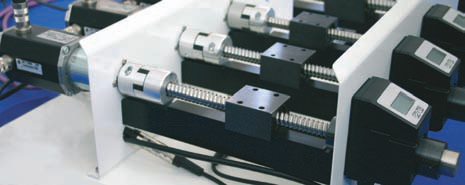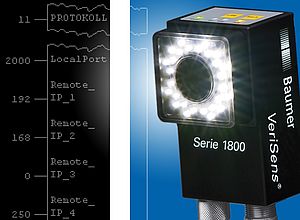For small to medium-sized companies the reasonable stage of automation in shaft positioning is limited to mechanical process displays that indicate the editing operator the current position value. The targets are available black on white as profile list for manual positioning by hand wheels. This procedure is getting more susceptible to errors the more shafts must be positioned and the more profiles must be administered. Quickly a line is skipped or a number of a positioning shaft is mixed up. An incorrectly positioned shaft however means rejects until the error is traced and corrective actions are taken. The waste of time with occurring costs is unnecessary and could be avoided. Shaft positioning system is the magic word, but how to adapt the stage of automation to individual application requirements? It’s a fact that the stage of automation is above all determined by price and performance, where technical overhead is surely not what you need.
A flexible shaft positioning system can offer a solution, with several configurations and different stages of automation that adapts to individual needs. The single system components can also be implemented in combination with each other at one and the same machine. Electronic support in manual operations is possible, as well as automated positioning by servo drives. AccuDrive fills the gap between mechanical hand wheels and servo drives and is the perfect solution for partially automated format alignments at wood and metal sheet processing, packaging and printing machines. The mobile actuator looks like a power tool and is capable of communicating by infrared interface with position displays directly mounted on the positioning shafts. Status LEDs indicate the operator which shaft requires realignment and in which positioning order. Any mix-ups and resulting collisions are eliminated. The tool is docked to the shaft to be positioned, and the respective position display transmits the commands for clockwise or counter-clockwise rotation or slow speed. When reaching the target position the tool stops automatically. This means a considerable improvement to the operator, especially when a format implies many shaft alignments.
The mobile actuator does not only simplify positioning with existing profiles but also editing new profiles. Again the power tool is docked to the position display mounted on the positioning shaft. Now the required positioning direction is selected by two buttons provided at the tool. Press and hold the ON switch to start the positioning operation. The actual value is visible to the operator on the display. As soon as a required position value of the respective format is achieved release the ON switch and the value is saved as target in the electronic profile. The positioning system comprises a compact controller capable of administering up to 100 profiles that are made available for later recalls to maximum 32 position displays.
The shaft positioning system may either be a stand alone solution or utilized for direct communication with a master control. Gateways are available for all current fieldbus interfaces for data transfer from the bus to the RS485 network of the position displays and vice-versa. The controller can be utilized as memory for max. 100 profiles and complex profile configurations.



















